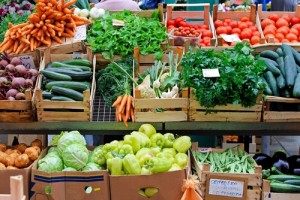Advancements in technology have changed the way many people go about their lives. Phones are always on-hand, though rarely used to make a call. Rather, people are using their devices for entertainment, gathering information and shopping.
Of the many areas of retail available to the online or mobile shopper, one has been slow to grow, but is quickly gaining momentum: meal kit delivery services. These services bring ready-to-cook meals, along with easy to follow recipes, to subscriber's doorsteps.
According to a report from Packaged Facts, meal kit delivery services in the U.S. has the potential to grow to $1.5 billion this year.

"These days, consumers have access to almost everything without leaving their home and—through the power of smartphones—without even speaking to another human being," explained David Sprinkler, a research director at Packaged Facts. "Rather than worrying whether meal kit delivery services will cut into their business, some grocers and food marketers are taking the bull by the horns and starting their own such services."
Grocers can expect change
According to Business Insider, online grocery sales are expected to increase 21.1 percent a year between 2013 and 2018, catapulting the sector's market share to almost $18 billion. Meanwhile, offline grocery sales – those made in physical stores – are only expected to grow 3.1 percent.
Restaurant Business reported meal kits reached $1 billion in 2015 but is on track to reach $4 billion in the next five years. Restaurant Business reported this is not just a trend, but a disruption in the way people consume food – a new form of competition to restaurants that will take about 57 percent of dollars away from consumers' grocery budgets.
Subsects of the online grocery market

While online grocery is expanding all-around, it has been noted that these services are most popular when used in a specific way. There are three particular uses BMC's report focused on:
- Subscription model shopping
- Searching for specific brands or products
- Major grocery shopping
Meal kit and food subscriptions are becoming more popular. Nielsen reported 20 percent of generation Z are already signed up for subscription services, while 55 percent are interested in trying it. Meanwhile, 19 percent of millennials are already taking advantage of them and 60 percent are curious to find out how they would like it.
Meal kits are gaining popularity among all age groups. Many people in the silent and baby boomer generation are gaining interest in home food delivery.
Nielsen reported that niche grocery products also do well online. Chocolate and healthy options in particular show potential to be successful in the online arena. Online grocery stores allow for a more diverse product selection than what might be found in the neighborhood shop. BMC found that 12 percent of online grocery trips are related to subscription services. Further insight states that this type of grocery shopping has a high retention rate for retailers, with 76 percent of subscription shoppers saying they plan to buy again from a particular merchant.
As these areas continue to grow in popularity and use, retailers will need to come up with effective protective packaging solutions to bring these goods to their consumers' doors unharmed and ready to be consumed.


